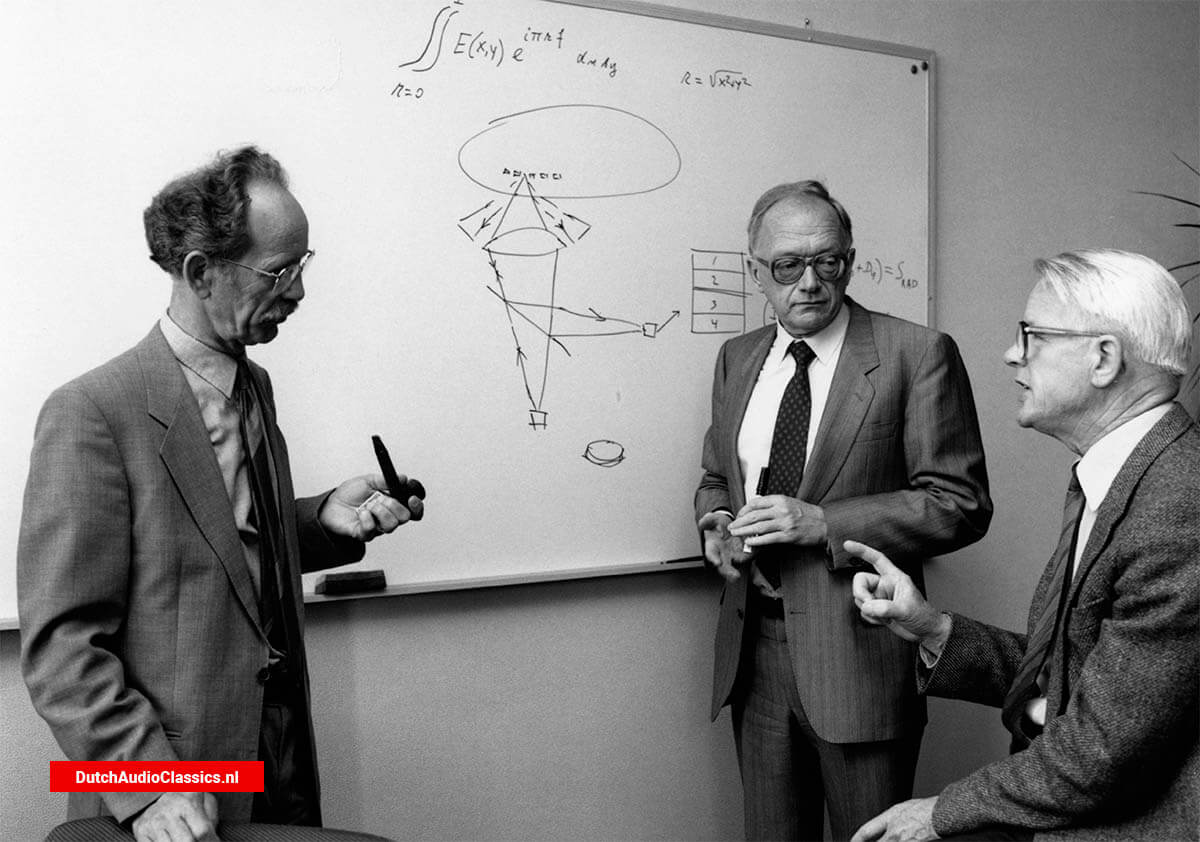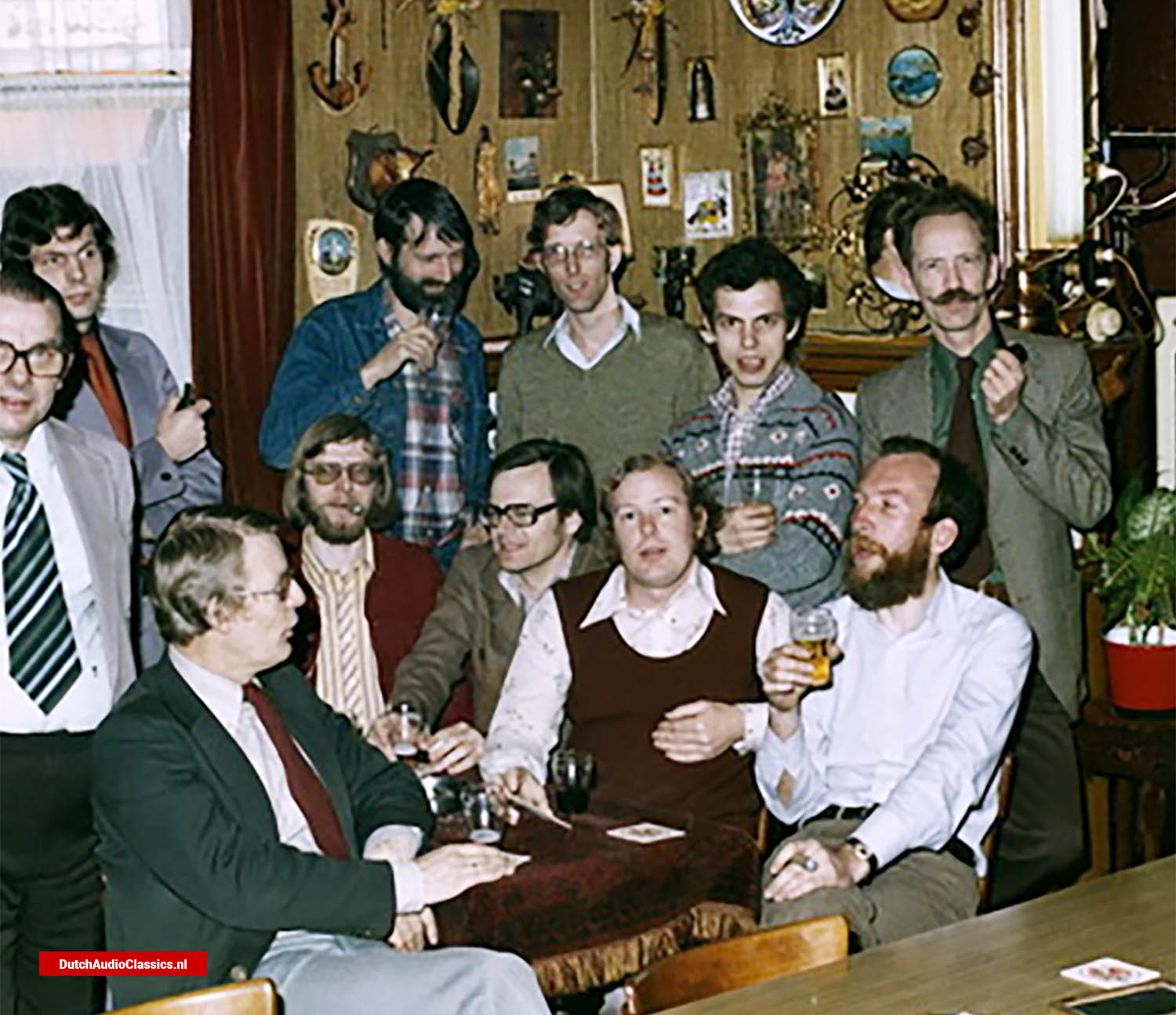Gijs Bouwhuis was a Frisian man who was born and raised on December 2nd 1929 in Wolvega, the Netherlands. He entered military service in 1948 and later became an assistant at the NatLab in 1951, where he worked under the optical group of Piet van Alphen. He spent his time at the NatLab absorbing technical knowledge, attending courses and studying in the library. Over time, he grew into the most influential optical expert at the NatLab under Van Alphen and Hendrik de Lang.
![Gijs Bouwhuis]() Gijs Bouwhuis, June 1986
Gijs Bouwhuis, June 1986
At NatLab, Bouwhuis read many technical articles and books about optics. He became the most prominent expert due to his understanding of mathematics and physics behind optical phenomena. In the mid-seventies, he had the opportunity to lead the optical group, but he declined. In the early seventies, he made two brilliant inventions with Herman van Heek, searching for a replacement for wasteful chip imprinting. They created a machine that directly shrunk chip patterns onto silicon wafers. Bouwhuis came up with a solution to their biggest problem by using a marker that wouldn't wear off during chemical processes and a laser measurement that was very accurate.
This positioning technique forms the basis for ASML's competitive advantage, which was established as an independent company in 1984. The company's later logo was inspired by Bouwhuis's alignment marker. Bouwhuis also worked on optical recording and brought crucial ideas to the system. He realized that the information on a video disc had to be read through a transparent layer of plastic to minimize the harm from dust, scratches, and grease. Bouwhuis's idea led to the through-the-disc patent and a more favorable distribution of CD royalties for Philips than for Sony in 1980. Although his name appears second on the patent, his ideas were critical to the success of the project.
Gijs Bouwhuis - 1929 - 2016
Bouwhuis was a renowned inventor in the Dutch high-tech industry, known for his exceptional contributions to technology. He held several critical patents, including the compact disc and waferstepper, both of which were major commercial successes. The compact disc was produced by the well-known electronics company Philips, while the chip machine was manufactured by ASML. Bouwhuis's impact on the industry will continue to be felt for years to come.
Color separation in color television cameras - January 19th 1989
In color television, the light from a scene needs to be divided into its red, green, and blue components. Previously, color separation was achieved through the use of interference layers on plate-shaped mirrors in color television cameras. However, this method had several limitations including large space consumption, limitations on camera lens choice, image errors caused by plate-shaped carriers, and a high susceptibility to damage. Additionally, the large angles of incidence resulted in image color fading, poor separation, and deviations in polarized light.
In 1960, G. Bouwhuis and H. de Lang revolutionized color separation with their development of a prism system that utilized color-selective reflective interference layers. This system greatly reduced or eliminated the previously mentioned limitations, with the first layer reflecting the blue light and emitting it through total reflection on one side of the prism. The second layer reflected the red light and directed it out of the prism in a different direction. The green light, meanwhile, passed through both layers and exited the prism in the forward direction. This invention remains the standard for color separation in almost all modern color cameras, including those equipped with CCD image sensors.
 Gijs Bouwhuis, June 1986
Gijs Bouwhuis, June 1986
 From left to right: Gijs Bouwhuis, Piet Kramer and Klaas Compaan
From left to right: Gijs Bouwhuis, Piet Kramer and Klaas Compaan
 Standing in the back: Jos Kleuters, Jan vd Werf, Peter Greve,Mart Bierhoff, Gijs Bouwhuis. Sitting in the front: Kees Bulthuis, Wil Opheij, Jacques Heemskerk, Gerard van Rosmalen, Kees Immink.
Standing in the back: Jos Kleuters, Jan vd Werf, Peter Greve,Mart Bierhoff, Gijs Bouwhuis. Sitting in the front: Kees Bulthuis, Wil Opheij, Jacques Heemskerk, Gerard van Rosmalen, Kees Immink.